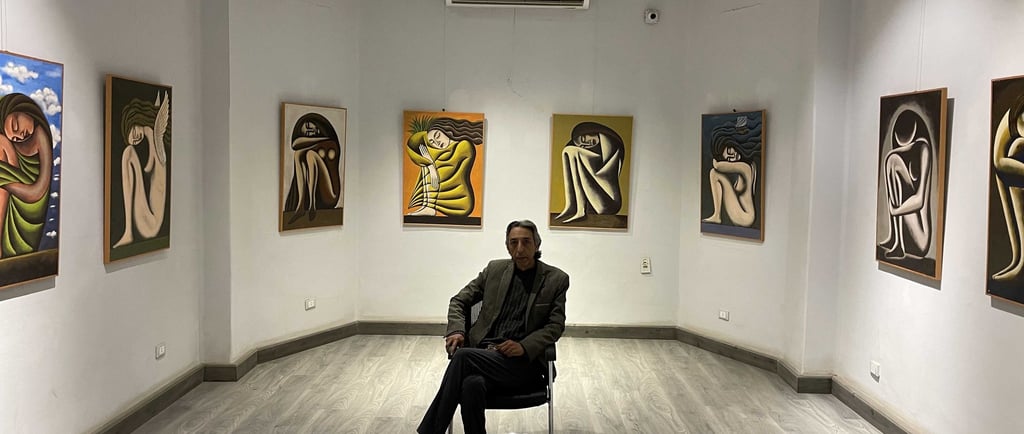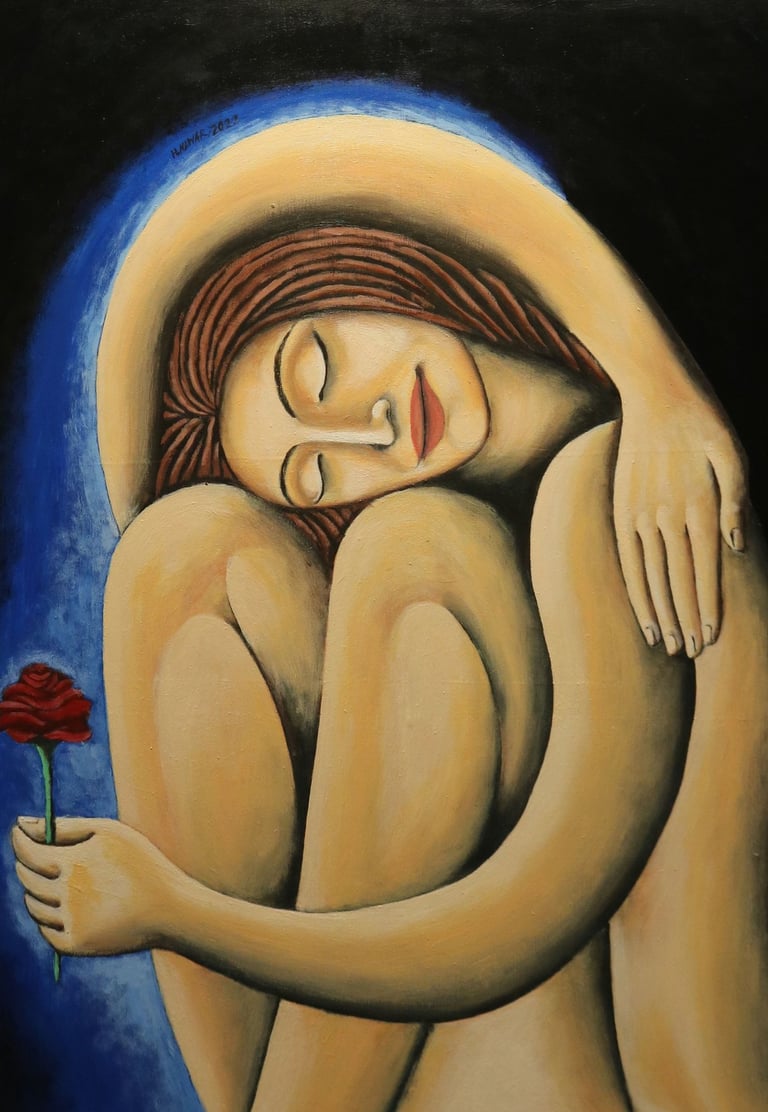Do Not Miss: for personal, business, and e-commerce sites, And get a 20% discount using this Code: EOSDAHLIA6M2, Start Now.
“Sleeping Beauties” by Hesham Nawar: A Poetic Dialogue Between Love, Death, and the Silent Body
Informed by personal crisis, ancient Egyptian iconography, and timeless literature, Hesham Nawar’s "Sleeping Beauties" emerges as a meditative series that explores the fragile intersections of love, mortality, and the metaphysical power of the body in repose.
TRANSLATED ARTICLES
Yasser Sultan, Journalist at independent arabia.
12/3/20243 min read


Hesham Nawar among his paintings of Sleeping Beauties.
Hesham Nawar: An Artist Drawing from the Edge of Life
In 2018–2019, Egyptian visual artist Hesham Nawar endured a near-fatal health crisis that profoundly shaped his creative trajectory. Bedridden for long stretches of time, Nawar turned inward, using his brush to articulate the inexpressible. Inspired by classical and modern texts—including Ibn Hazm’s The Ring of the Dove, Nacer Khemir’s film The Lost Ring of the Dove, and Yasunari Kawabata’s House of the Sleeping Beauties—his work became a response to the deeply personal question: What is love when the body begins to fade?


The result is Sleeping Beauties, a deeply symbolic and emotionally charged series of paintings that present the female figure in a recurring fetal pose. Far from static, each iteration transforms through variations in texture, background, and light. Nawar presents the female body not as an object of desire, but as a vessel of inner life—haunted, dreaming, enduring.
Every canvas in Sleeping Beauties carries layered meaning. One image features a sleeping woman wrapped in olive-green robes, suspended in a sea of dreamlike clouds—suggesting not only rest, but transcendence. Another contrasts this softness with bold fire-orange tones, where a delicate sapling blooms at her side, symbolizing renewal and rebirth. In a more solemn moment, the same figure appears nude against a pitch-black void—a meditation on exposure, mortality, and the unknown.
Nawar’s visual vocabulary relies heavily on symbolism, a hallmark of his artistic voice. A flower clasped in the girl’s hand might represent the tenuous relationship between nature and the human soul, while another piece integrates her flowing hair into seascapes, blending identity with the eternal. A sailboat drifting through these waves invites interpretations of journey, longing, or quiet departure.
Occasionally, Nawar introduces male and female figures together—always nude, always tender—surrounded by sparse natural elements such as a sapling or a stone. These minimalist compositions reflect a return to primordial themes: origin, union, creation.


Nawar’s work resonates deeply with the visual legacy of ancient Egyptian art, particularly the block statues of the Middle Kingdom, known for their closed, seated positions. This stylistic choice—meant originally to preserve statues against time—takes on new life in Sleeping Beauties. Through his reinterpretation, the artist embeds ancient forms with modern vulnerability and emotional resonance.
This cultural continuity is not accidental. Nawar’s Egyptian identity pulses throughout his work. His tribute to Mahmoud Mokhtar—the iconic Egyptian sculptor known for fusing Pharaonic and modern aesthetics—is both artistic and philosophical. Like Mokhtar, Nawar seeks to connect tradition with contemporary experience, anchoring ephemeral emotions in visual forms that endure.
Artistic Language Rooted in Symbolism and Storytelling
The Influence of Ancient Egyptian Aesthetics
Literature, Mortality, and the Silent Narrative of the Body
The title Sleeping Beauties is a nod to Yasunari Kawabata’s philosophical novel, which explores the human relationship with time, beauty, and impermanence. Kawabata’s influence is particularly felt in Nawar’s meditative pacing and the quiet solemnity of his figures. Through this lens, Nawar explores death not as a rupture, but as a silent continuation of love—a theme reinforced by his brushstrokes and shadowed palettes.
His art does not scream. It whispers. And in these whispers, viewers are invited to reflect on their own experiences of longing, recovery, and transcendence.


